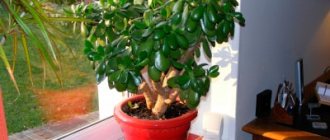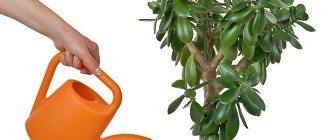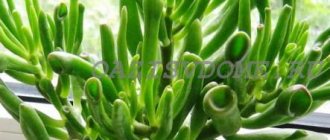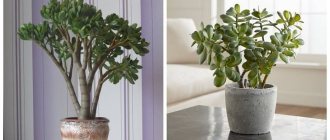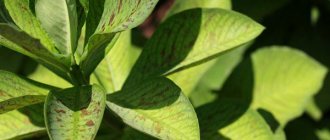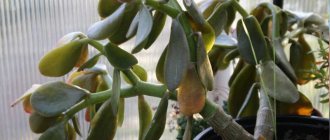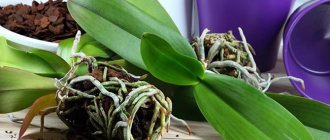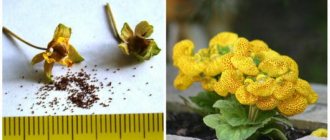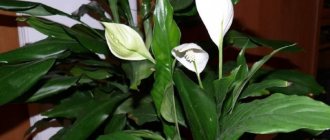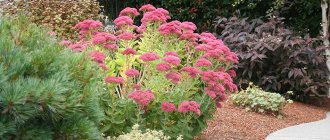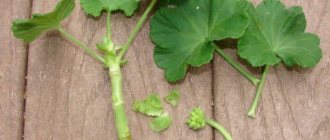Succulent lovers are sure to have at least one representative of the Crassula species in their collection. An unpretentious money tree is an elegant interior decoration. With proper care, Crassula will resemble a real tree with round coin-shaped leaves. There is a belief that a large money tree attracts wealth and prosperity to the house. Grown from a sprout, it can improve the home environment, bring not only aesthetic pleasure, but also be useful in the treatment of many diseases.
About the plant
The indoor perennial comes from the countries of the Southern Hemisphere, so it prefers the sunny side and dry soil. Watering, of course, is necessary, but at large intervals. In order for the tree to start working and bring wealth to its owner, it should be placed in the apartment according to Feng Shui - near the south, south-east window opening. The financial situation of the family will depend on how green and fleshy the leaves are.
The deciduous ornamental plant belongs to the genus of succulents. It tolerates drought well, thanks to the special structure of the leaves - they accumulate moisture. At home, a coin tree can grow up to 2 meters. In nature there are 4-meter specimens.
Most fatworts are perennials, but annual species are also found. They die immediately after flowering. To see the money tree bloom, you will need to work hard and be patient. Delicate white flowers will only appear if the plant is kept in the right conditions.
Crassula flowering
With proper care for the money tree, it can bloom at home. Basic requirements for the formation of buds:
- sufficient illumination all year round;
- cold winter;
- good feeding and frequent replanting.
No matter how much the owner cares for the money tree, only mature specimens, older than 10-15 years, are capable of blooming.
Money tree flowers are small, with white petals, star-shaped and emitting a strong aroma. Flowering lasts for 2-3 months and occurs in winter.
Expert advice: “Flower buds are formed on young shoots in the fall. If you want the money tree to bloom, you need to prune it in early spring and not disturb it again this year.”
Another important condition for flowering is a sufficient amount of fresh air. The money tree will not produce buds if it grows in a poorly ventilated area.
Types of money tree
In total there are about 300 species of coin trees. Many specimens take root well not only in special greenhouses, but also in simple apartment conditions. Tree-like, ground-cover, spike-shaped, decorative-flowering species of Crassula are designed for indoor keeping.
“Money tree” belongs to the tree-like plant species. This group includes the usual fat plants, which have a characteristic woody trunk and dense leaves. Some specimens may look radically different from each other and have different descriptions. In turn, they are divided into the following varieties:
- Ovata. Also called “Coin Tree”, “Bear’s Ear”. The maximum height of the tree is 2 m, the thickness of the trunk is 30 cm. The leaves are bright emerald green and elliptical in shape, small in size. Some varieties of Ovata have a red border around the perimeter of the leaves. The plant blooms white, the inflorescences are collected in the form of umbrellas. It is easy to form a bonsai or branched composition from such a money tree.
- Ovata Minor. Representatives of the species have a beautiful, non-trivial shape. The miniature plant barely reaches a height of 20 cm with a maximum trunk width of 2 cm. The interesting color of green leaves with a scarlet tint makes the plant ideal for creating home compositions.
- Ovata Sunset. It stands out with its expressive red-yellow-white painting on the leaves. A beautiful hybrid must always be kept in a place with plenty of natural light. Otherwise, the leaves of the plant will lose their unique color.
- Oblikva. The leaves of this species are oval with a pointed tip. The leaf blade is large with a raised end and downward curved sides.
- The Hobbit. The hybrid was created by breeders by crossing common toast with milkweed. The result is leaves turned outward, connected from the base to the middle. The trunk is more branched than that of simple Ovata. The perennial Hobbit has several variegated varieties called Golum, Chimera and others.
- Undulatifolia. A non-standard variety of Crassula stands out for its silver-blue flat leaves. The tips are slightly wrinkled and have a reddish tint.
What does the plant suffer from and methods of treatment
Root rotting
Symptoms:
soft stem and leaves.
Treatment:
Carefully remove the plant from the pot and free its roots from the ground. After this, carefully examine the rhizome; if it is not completely damaged, then the plant can still be saved; if not, then, unfortunately, you will have to throw it away. It is necessary to cut off the damaged areas of the root and treat the healthy ones with a fungicide, dry it and transplant the plant into a new pot.
Fungus - gray rot
Symptoms:
the leaves turn yellow and become covered with brown spots.
Treatment:
the same as with rotting roots.
Spider mites
Symptoms:
a thin, almost invisible web that envelops the leaves and stems of the money tree. It appears when the plant is not watered for a long time and its leaves are not wiped of dust.
Treatment:
treat the top of the money tree with a broad-spectrum insectoacaricide.
Powdery mildew (mealybugs)
Symptoms:
the leaves and trunk become sticky and as if covered with a coating. Most often they attack weakened plants.
Treatment:
wipe the damaged areas with a napkin soaked in medical alcohol, and in case of complete infection, treat the fat plant with a broad-spectrum insectoacaricide.
Such brown spots on the leaves of the money tree can be not only a sign of fungal infection of the roots, but also an ordinary sunburn received from direct sunlight.
Tips and rules for growing and caring for plants
Most often, flower growers grow the Ovata species of Crassula on their windowsills. An unpretentious money tree with a thick trunk and oval leaves does not require special maintenance conditions. It is enough to remember his love for sunlight, take into account the period of growth and rest. If you choose the right pot, type of soil and fertilizing, you can get natural home decor with ideal characteristics.
Soil and pot size
You can determine whether the soil is chosen correctly for a money tree by the condition of its leaves. If they are bright green in color with red tips, dense and fleshy, then the soil is doing an excellent job of its nutritional function. In order for the fat plant to grow strong and bloom, it needs to create all the conditions for this.
Only loose soil with plenty of sand and drainage is suitable for the money tree. The breathable structure will prevent fluid stagnation. After watering, excess moisture should go into the pan and not remain in the soil.
Plant growth depends on the quality of the soil. For an underdeveloped root system, a special composition consisting of several layers will be required. The bottom layer of 1 cm is laid out with pebbles and broken bricks. In the middle there is a soil mixture of soil, river sand, and humus. The top is covered with expanded clay.
The root system of the Crassula plant will develop well in a wide, shallow pot. The width should be at least 1.5 times the crown diameter. The container must be stable with a flat bottom to prevent the plant from overweighting and tipping over. The size of the money tree depends on the depth of the pot. If you plant it in a long flowerpot, it will stretch upward; in a low flowerpot, natural branching of the plant will occur.
To plant a money tree, you cannot use mixtures based on peat or moss. Such soil retains moisture for a long time, which will lead to rotting of the plant roots.
Temperature
The usual room temperature of 20-25° C is suitable for Crassula. The minimum threshold is 10° C, the maximum is 32° C. In summer, the pot can be taken out to the balcony or veranda. To lower the temperature, the fat plant can be moved to the floor. If the temperature goes beyond the comfortable limits for the plant, the flower goes into a state of complete freezing.
In winter, it is better to move the money tree to a cool place. The temperature should be maintained in the range of 14-16 ° C. The fat woman can winter on the loggia, on the northern windowsill. The condition of the plant must be constantly monitored in order to notice changes for the worse in time.
Air humidity
Coinwood does not require moisture control. Dry room air in summer does not harm it. The plant calmly sprouts shoots and grows leaves. Once a month it can be sprayed with a spray bottle or doused with water from the shower. In the latter case, it is necessary to cover the ground with polyethylene.
All types of succulents are accustomed to low humidity. Plants with high moisture requirements are not suitable for them as neighbors on the windowsill. Do-it-yourself removal of dust and dirt from the leaves should be done with a damp cloth.
Lighting
The ideal place for representatives of succulents is a windowsill. It is better if the windows face south, southeast. On the southern window, the plants will have to be shaded when the sun is at its zenith. The north side is not taboo for the Crassula. But, the money tree will begin to grow upward, branching will stop, and the stems will become weak and stop becoming woody.
For such plants, lighting plays the most significant role. With a lack of light, Crassula can completely stop growing, get sick and even die. In the summer, in addition to light, the plant has a need for fresh air. If it is not possible to take the pot outside, the room should be periodically ventilated, taking care of it without drafts.
Watering
The money tree categorically does not like excessive moisture. Excess moisture will lead to rotting of the roots, trunk, and branches. After which the plant will no longer be able to be saved. If the soil is constantly wet, fungal diseases will develop and the leaves will turn yellow and fall off.
Due to the constant accumulation of moisture in the leaves, excessive watering poses a greater danger to Crassula than its lack. Such a plant will delight those who constantly forget to water it with a lush and green crown. Crassula grows freely without water for a month. Recommended watering schedule: in summer - once a week, with the onset of cold weather - once every two weeks.
Feeding and fertilizer
The application of fertilizers is necessary for the plant at all stages of growth, especially after transplantation. Special fertilizer is included in the soil for certain types of plants. It is recommended to plant the money tree in a mixture of soils for succulents and ficus. As the nutrients originally contained in the soil become depleted, they will need to be replenished. The fertilizer that is suitable for the fat plant is the same as for cacti.
You need to start feeding in early spring. It is easy to determine the appropriate period. As soon as pairs of leaves appear, it means it’s time to increase the activity of the growing season. The soil is supplied with mineral fertilizers once a month. You can carry out the procedure more often, but then you need to reduce the amount of nutrients.
Fertilizers in granular form are applied to moist soil and mixed. This is done to avoid causing burns to the roots. The dry matter will break down slowly and will not reach the roots too quickly. Active feeding should not be prolonged.
Crown formation
Due to branching shoots and their strong growth during the growing season, the plant may lose its decorative appearance. The formation of the crown will help restore its former attractiveness. In addition to increasing decorativeness, pruning is carried out to improve color stability, simulate a strong trunk, and facilitate the care of succulents. There are several crown formation schemes:
- To strengthen the central trunk. In young fat plants, branching shoots and foliage in the lower part are removed. At the time of applying fertilizer, all newly formed branches are removed from an aged tree.
- Hanging shoots from the tops. The formation of a bonsai-type crown can be carried out after strengthening the trunk. Otherwise, the flimsy base may not withstand the load.
- Low, compact bush. You can stop the stretching and add splendor and volume if you regularly tear off the leaves on the trunk. Temporarily stopping watering will help slow growth.
- Spreading shrub. The money tree will increase in width if you constantly pinch the shoots at the top of the bush. Removing shoots from the apical buds will provoke branching of shoots from the axils below the cut.
Transfer
The best time to plant Crassula in new soil is the first half of March. During its development, the plant will more easily tolerate changing soil and pot. In summer and autumn, Crassula is replanted if absolutely necessary, if the container is not suitable in size, diseases or pests are detected.
According to the rules of replanting, all plants need to change the soil and pot every year. Flowers 3 years old and older should change their habitat once every two years. Frequent transplants of the fat woman are contraindicated. Each event is stressful for the tree and requires a lot of time to adapt and recover. Excessive movements can damage fragile leaves. To make money, an adult plant is replanted according to the following step-by-step scheme:
- Clean the new pot, prepare a mixture of soil, drainage, humus;
- Place crushed stone and broken bricks on the bottom of the flowerpot;
- Cover the substrate with fresh soil;
- Make small holes around the trunk, loosen the tree and remove it from the old pot;
- The soil at the base is not removed; only dead, rotten roots can be removed;
- Lubricate the cut areas with wood ash;
- Leave the plant to dry for several hours;
- Place the money tree in the center of the new container;
- Add soil to the root collar and water generously;
If, during the process of transplanting a fat plant, rotten roots are discovered, for the purpose of resuscitation, the plant is planted in a mixture of sand, turf and humus.
Bloom
Seeing a money tree strewn with white inflorescences is a great success. This plant does not often please with color, since it grows slowly and requires special conditions for the appearance of buds. If this event occurs, then the owner of the Crassula will be pleased with small white flowers, similar to stars, that appear on some or all of the young shoots.
Crassula can bloom at any time of the year. More often this happens in autumn or winter. If this moment does not occur for a long time, the reasons for the lack of bud formation should be found. The money tree will not bloom under the influence of the following factors:
- The plant is constantly exposed to light;
- The soil is dense and acidic;
- The earth is constantly moist;
- Stems and leaves are damaged by pests;
- The bush is affected by fungus and other diseases.
Transfer
Caring for a money tree necessarily includes timely replanting. Young specimens require it annually, adults - once every 2-3 years.
If a gardener wants the Crassula to stop growing, he may not replant it at all. It is enough to change the top layer of the substrate once a year.
To change the pot and renew the soil, Crassula is replanted at the end of March or in April.
The first transplant is done 2 weeks after purchase. It can be postponed for a longer period if the plant was purchased in winter.
Pot
Crassula has a heavy crown and a rather weak root system. The main requirement for a money tree pot is stability.
The container for transplanting the Crassula should be wide, but not high. It is advisable to use a clay pot because... it is heavier.
A prerequisite is the presence of drainage holes.
For only rooted cuttings, use bowls with a diameter of 5-7 cm. For a young plant, take a small pot, no more than 10 cm in height and 20 cm in diameter, so that the roots do not grow to the detriment of the above-ground part.
The diameter of a pot for an adult specimen should not exceed the size of the crown of a money tree.
The soil
The soil for the money tree is loose, easily permeable to water and air.
You can buy soil for succulents at flower shops. It is also suitable for fat women.
Recipe for making your own substrate:
- turf land;
- leaf soil;
- humus;
- gravel;
- coarse sand.
Take 3 parts of the first component, one part each of the rest. Gravel can be replaced with agroperlite. Some gardeners add ash to enrich the composition.
Before transplanting the plants, the soil is disinfected.
Step-by-step instructions for transplantation
Drainage (expanded clay, pebbles) mixed with charcoal or activated carbon is placed at the bottom of the pot. This prevents the soil from becoming waterlogged and reduces the risk of the plant becoming infected with fungal infections.
If the plant is mature, with a massive crown, stones, bricks, etc. are placed under the drainage to prevent the pot from tipping over. You can also use different supports.
Step-by-step instructions for replanting a money tree:
- Remove the flower from the old pot. To make this easier, transplantation is carried out the next day after watering.
- Examine the roots of the plant entwined in the earthen ball. If they are healthy, place the tree in a new pot without removing the old soil.
- If rotten areas are found, clean the roots from the soil and remove non-viable roots.
- Sprinkle the cut areas with charcoal and let them dry (2-3 hours is enough).
- Place the fat plant in a new pot with a layer of drainage and substrate.
- Cover the roots with soil. The root collar should not be buried. The soil level should be the same as in the old pot.
- Compact, but do not compact the substrate, water the plant.
- Place the pot in partial shade for a week. The room should be cool.
If an adult specimen with a large crown was transplanted, several stones are placed on top of the soil. They are removed when the root system has established itself in the new soil (after 7-14 days).
You can see how the fat plant is transplanted in the video below.
Reproduction methods
Crassula can be propagated in several ways. The choice of the appropriate option depends on the goal and expectations of the grower. Each method has its own characteristics, and therefore requires a clear definition and detailed explanation of the actions.
Cuttings and leaves
The easiest way to divide a money tree, especially if you need to preserve all the characteristics of the variety. Using cuttings, you can quickly grow a young but already grown plant at home. Propagation material can be taken at any time of the year. Young shoots remaining after the formation of the crown, small shoots that have taken root from the leaf, will take root well.
Only healthy, well-developed shoots can be cuttings for propagation. Curved, thin branches are not suitable, since the growing tree will take the same shape. A cutting of 5-10 cm, with at least 3 nodes and 3 pairs of leaves, is considered good material. Cut it from the top or from the stem. For rooting, part of the plant is placed in water. No special treatment is required to speed up the process.
Removing a money tree from a leaf is a long process, but real. The roots form quickly, which cannot be said about the sprout itself. A dense green leaf is suitable for dividing in this way. It is better to remove material from the middle of the branch. After cutting, the leaf is placed in water or directly in the ground. It should simply be on the surface in a horizontal position. The base of the sheet should be immersed in the substance by 5 mm.
Seeds
Reproduction by seed material is rarely carried out. This is due to the long process of plant formation and large time and labor costs. This method is used by breeders to grow new varieties and hybrids. At home, planting and caring for money tree seeds is carried out as follows:
- Small containers are well washed and disinfected;
- Fill them with soil mixture;
- Seeds are poured onto the surface of the leafy soil and sprinkled with sand;
- Spray with water from a spray bottle and cover with glass or film;
- After 2-3 weeks, the first shoots appear;
- For seedlings, other pots with turf-leaf soil are prepared;
- When the plants grow to 5 cm, they are transferred to light soil and placed in a place with a constant temperature of 15-18 ° C.
Formation of the Crassula crown
Caring for a money tree at home always includes pruning. If this is not done, the plant will be of irregular shape, with branches that are too long and break under their own weight.
They begin to give the crown the correct shape from the first days of life.
Principle of pruning the money tree:
- The lateral shoots of a young specimen are removed until the length of the bare trunk reaches 15 cm.
- When the total height of the crassula becomes 25-30 cm, cut off the crown under the two top leaves. This leads to the formation of side shoots.
- The cut is made at an angle of 45°. It is advisable to remove no more than ⅓ of the length of a healthy branch. If branches are removed completely, this should be done over brown rings (leaf scars).
- All cuts are sprinkled with crushed coal to protect the plant from infection.
- When the first shoots grow sufficiently, they are pinched (the top bud is removed) so that they also begin to branch. 4 pairs of leaves are left on each branch.
If, after pinching the shoot, not two lateral buds, but one, form on it, the procedure is repeated.
The described principle allows you to form a tree-like plant.
If a gardener wants to get a lush bush, he should not remove the side shoots of a young fat plant. But pinching will still be required. Otherwise, the cutting will grow without branching.
If you trim an adult plant, stumps will form in place of the removed branches. This procedure should be carried out in the spring in order to remove shoots and branches that have stretched out over the winter and grow inside the crown.
In the summer, only leaves that have begun to turn yellow or are out of shape are removed. In autumn and winter, the tree is not touched.
If signs of infection are detected, the damaged parts of the plant are cut off immediately, regardless of the time of year.
If it is necessary to rejuvenate the plant, total pruning is carried out, removing up to ¾ of the length of the shoots.
After pruning, as after transplantation, the money tree is kept in partial shade until it recovers from the procedure.
You can find out what mistakes gardeners most often make when forming the crown of a crassula from the video.
Diseases and pests
The main factors leading to diseases and pests in Crassula are dampness and drafts. The reason for the development of all negative events is improper care. The most dangerous period for fatworts is winter. Ailments appear at this time due to lack of lighting, temperature fluctuations, and the operation of heating devices. With insufficient attention, the plant may suffer from the following diseases and pests:
- Fungal diseases. Defeat by spores occurs in the cold season. Gray, wet rot appears as brown spots, constantly increases and spreads over the entire leaf. Treatment consists of transplanting the plant into disinfected soil and removing diseased shoots. Fungal spores will be eliminated by reducing the amount of watering, ventilating the room, and disinfecting sections with a solution of potassium permanganate.
- Bacterial diseases. Externally they resemble a fungus. Such diseases are treated with fungicides. Then it is necessary to spray with products based on penicillin and gentamicin so that the leaves do not begin to fall off.
- Shield. Female insects attach themselves to leaves and stems and remain motionless. All affected areas must be smeared with kerosene and pests must be removed manually. Then the entire fatty must be treated with a solution of laundry soap and tobacco.
- Spider mite. The appearance of an insect is indicated by a silvery coating on the stems and leaves. Inaction leads to yellowing of the plate and its death. A sharp rise in humidity levels will help remove the pest. The tick does not live in such conditions. The money tree should be sprayed generously with water and placed in a plastic bag.
- Mealyworm. It lives in the axils of leaves, feeding on their juice and plant tissues. This leads to a weakening of the fat woman’s immunity and shedding of leaves. Remove the insect with a stream of water. The pest's habitats are wiped with a cotton swab dipped in garlic infusion.
- Root mealybug. The pest can only be detected when the plant is replanted. The roots will be covered with growths, and insect movements will be noticeable. Until then, the reason for the deterioration of the fat woman’s condition will be unknown. The worms are removed under warm running water and treated with pesticides.
Common mistakes and problems in growing
The money tree rarely gets sick or is attacked by pests. More often, the loss of decorativeness is associated solely with errors in care. The main ones are given in the table.
| Problem | Probable Cause |
| Thinning leaves | Overwatering |
| Falling leaves in winter | Room too warm |
| Fall of leaves in spring and autumn | Excess fertilizer. Watering with cold water. Excess moisture. Root rotting |
| Root rotting | Excess moisture, especially during the dormant period when kept in a cool room. |
| Yellowing of leaves | Lack of lighting |
| Wilting of leaves. Light or black spots on the plates | Sunburn |
| Dry reddish crust on leaves | Soil depletion. Stagnant air in the room. Sunburn |
| Dry brown spots on leaves Loss of turgor | Lack of moisture |
| White dots on leaves | Excess moisture |
| Darkening of the trunk | Excess moisture |
| The trunk has become soft | Lack of light. Excess moisture. Heat |
Since the money tree is considered an unpretentious plant, it is often planted by inexperienced gardeners.
No matter how hardy it is, the owner’s mistakes affect the condition of the Crassula. Because of them, it loses its decorative effect and sometimes dies.
The consequences of most of them are solved by changes in care. Overwatering can cause root rot and death of the money tree.
Healing properties of money tree
Many herbalists highly value the medicinal properties of Crassula. The money tree can have a positive effect on a person’s emotional and physical health. The plant has antiviral, healing, antiseptic properties. It also relieves itching, relieves pain, and softens the skin. Crassula is included in various traditional medicine recipes.
For skin and hair
Money tree is successfully used in cosmetology. Thanks to its amazing healing properties, the plant is in demand in the beauty industry. Crassula is a raw material for the production of hair, hand and face skin care products.
Crassula face masks have a rejuvenating, cleansing, and soothing effect. A universal remedy can get rid of acne and saturate the dermis with useful substances. To do this, you need to cut several leaves, cut them lengthwise, and wait for the juice to release. The area of the break should be lubricated with foci of inflammation.
Crassula has an amazing effect on hair. They begin to grow faster, strengthen, become firm and elastic. The mouthwash is prepared from the succulent green leaves. A small amount of raw materials (5-10 pieces) must be washed, placed in a glass container and poured with 1 liter of boiling water. The infusion is left in a dark place until it cools. It is then filtered and used to rinse hair.
For joints and blood vessels
The juice of all succulents has an anti-inflammatory effect. It is often used in the complex treatment of joint diseases. It quickly relieves symptoms of arthritis, sprains, and rheumatism. To make a miraculous lotion, you will need to pick a bunch of money tree leaves and grind them. Place this mixture on gauze and cover the affected area. The compress should be secured with a bandage or soft cloth and left for 2 hours.
Crassula is used to treat a wide range of diseases. One of them is varicose veins. An alcohol tincture is prepared from the plant, which relieves swelling and relieves pain. Medicine is prepared from Crassula leaves. Fill them with alcohol and leave for 1 month in a dark place. Wet your hands with this product and massage your feet with benefit.
For mucous membranes
Money tree drops quickly relieve a runny nose. Prepare the solution one time at a time. You need to squeeze out the juice of one leaf, mix it with water 1:1 and drop it into both nostrils. If you have a persistent runny nose, you can prepare a medicine for rinsing. We extract the juice from 10 leaves, filter through gauze, mix with water and use for rinsing.
Crassula rinse solution will be an excellent assistant in the treatment of sore throat. The plant can be used for stomach ulcers and to restore damaged tissue. To relieve inflammation and reduce pain, it is enough to eat 2 leaves of crassula in the morning an hour before meals.
Growing conditions
The money tree, like any succulent, grows well in a sunny location. If there is not enough light, the shoots of the plant may stretch, while the leaves will become thinner and fall off. But direct sunlight on the leaves can cause burns. Therefore, in summer it is better to protect them during lunch hours. The money tree loves fresh air, so in summer it can be taken out into the garden or onto the balcony. You can open the windows and ventilate the room.
Crassula is a southern plant, so it does not tolerate hypothermia.
In winter, when the temperature drops from 10°C, the plant may die. In summer it does not like extreme heat. It is advisable that the room temperature does not rise above 28°C. A short-term increase in temperature will not harm the plant. The optimal temperature for a money tree is considered to be 20-22°C.
Air humidity is not particularly important for the fatty. After all, it stores a substantial supply of moisture in its leaves and uses it during periods when the soil dries out. But you can spray the plant. This is done carefully so that drops of water do not accumulate in the axils of the leaves.
Watering and fertilizing
Money tree shoots tend to turn toward the light source over time. Therefore, over time, the tree can tilt strongly to one side. To avoid this, you need to periodically rotate the pot around its axis.
You don’t need to water the money tree often, only after the lump of earth in the pot dries out. Usually in summer it is 1-2 times a week. During the dormant period, which for the money tree begins in September and lasts until March, the money tree is watered no more than 2 times a month.
Excess moisture for the fat woman is much more dangerous than its lack.
If the soil dries out, it will take it from the leaves and stem. Therefore, the plant can be left unattended for a couple of weeks. And from a large amount of moisture, the root system can rot.
The money tree is rarely replanted, so it needs regular feeding. Fertilize cacti no more than once a week.
Consequences of improper care
Usually the money tree grows well and does not require special care. But sometimes it loses its attractive appearance. This may be caused by the following factors:
- The leaves darken, wrinkle, and fall off. Brown spots appeared on them and on the stems. This occurs due to lack of moisture. It is recommended to water the plant once and see if watering has a beneficial effect on it.
- The leaves became pale and wilted due to too frequent and abundant watering. Stop adding water.
- The stem has turned black at the base, the leaves wither and wrinkle and fall off. These are signs of root rot.
- High humidity is the main enemy of the money tree. Rot and other pathogens develop in waterlogged soil. The tree stops growing, the leaves lose their elasticity and fade.
If signs of disease are detected, stop watering. Prepare a new pot or disinfect a previously used one. Remove the plant from the container and shake off all the soil. Inspect the root system of the plant. If dark roots are found, cut them with a sharp knife until they are white, which is the color of healthy roots.
The root system is dried and treated with a solution of Fundazol or a weak solution of potassium permanganate. Plant in new, slightly moist soil. Subsequently, water very carefully. If the root system of a money tree has disappeared, you can save it by cutting off the top and trying to root it.
More information can be found in the video:
